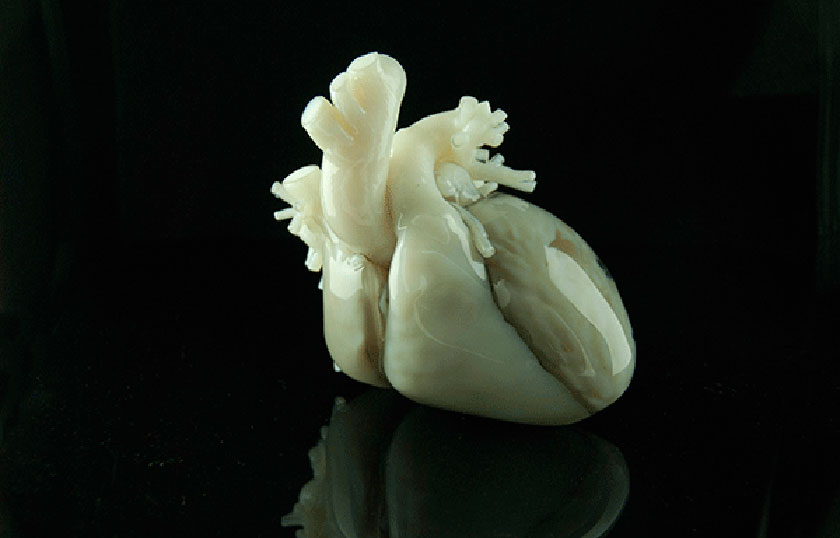Museum showcases healthcare beyond the bedside
The International Museum of Surgical Sciences has opened a new exhibit on healthcare careers

The International Museum of Surgical Science offers hands on exhibits, like this 3-D model of the human heart, to build up enthusiasm among young visitors for the many nontraditional careers available in health care.
International Museum of Surgical Science
When many people think about jobs in healthcare, the ones that immediately come to mind are a doctor and nurse. While both are vital and meaningful, there are plenty of other career choices in medicine. A new exhibit at the International Museum of Surgical Sciences in Chicago, Ill., highlights some of the many options available.
Doctors and nurses make up only 40 percent of healthcare jobs. The others include careers in fields like biotechnology, therapeutic services and health informatics. The museum’s new “Rx for Success Heath Career Center” introduces students in middle and high school to some of these other routes to jobs in healthcare through hands-on experiments and interactive displays.
Surgical implements old and new take pride of place in most rooms at the museum. Rx for Success, by contrast, has little on display. A large computer screen hangs on one wall, and beautiful 3-D-printed anatomical models of the heart are displayed on the other. Low tables dominate the room, and these are where the action takes place. “We are about hands-on experiences here,” explains Emmet Liston. He manages the museum’s exhibits.
Teens with a gift for language might be drawn to health-information management. A demo allows them to identify diseases by the prefixes and suffixes that describe them. For example, students might learn that “heme-“ is a Greek-derived prefix referring to blood. This allows them to recognize hemophilia, hematocrit and hemoglobin as relating to blood. Students who show a talent for drawing might try out medical-illustration and animation software. A machine that stretches replacement tissues as they grow demonstrates how biotechnology can replace the ligaments in the foot of a visitor’s favorite athlete. Experiments that let kids test the viscosity and density of blood samples introduce them to pathology. Holding the model of a heart created using a 3-D printer gives students an example of how biomedical engineering has helped us to understand the way our bodies work.
Even the giant computer with a touchscreen on one wall plays a role. It displays an interactive program with many science careers. Pressing on a job title brings up a screen describing what that job entails and what personalities might be drawn to it. The screen also highlights what education a student would need to succeed in that career and whether that job can transition into other, related fields.
“We don’t expect kids to say, ‘Oh, I found out what I’m going to do with my life by reading this biomedical engineering panel,’” Liston says. “We just want to let people know that no matter what kind of personality you have, no matter what your skill sets or your strengths, there’s something for you in healthcare.”
The museum also offers booklets for self-guided tours of its exhibits (including this one). Those booklets help kids understand the exhibits and include questions and quizzes that meet Illinois state science education guidelines. In an effort to make sure access is affordable to all, the museum waives its admission fees to the public on Tuesdays. Learn more about the facility and its educational outreach at its website.
Power Words
biomedical engineering Combining engineering and biology to aid human health. Professions in this field develop artificial limbs, use biotechnology to produce new drugs and develop models to understand how diseases work.
biotechnology Using a living system, such as cells or plants, to make a useful product. Examples include using bacteria to produce human insulin for diabetes, modifying plant chloroplasts (food-making parts of a plant cell) to produce vaccines or using human cells to produce skin to help burn victims.
engineering The field of research that uses math and science to solve practical problems.
hematocrit A measure of the number of red blood cells in a given volume of blood.
hemophilia A group of genetic disorders in which blood does not clot effectively after a cut. People with hemophilia do not stop bleeding naturally. The gene for this disease is carried on the X chromosome. Because men have only one X chromosome, those with the gene for this disorder will always deveop it. Women have two X chromosomes, so they only develop hemophilia if they inherit the gene from both parents.
hemoglobin A molecule that binds to oxygen in the blood.
informatics The study of how humans create, process and understand information. Informatics is useful in many areas such as healthcare, ecology and studies of human behavior.
ligament A fibrous and elastic material that connects one bone to another.
pathology The study of diseases. Pathologists look at what causes a disease, how symptoms develop and examine all stages of an illness.
viscosity The measure of a fluid’s resistance to stress. Viscosity corresponds to the idea of how “thick” a liquid is. Honey is very viscous, for instance, while water has relatively low viscosity.